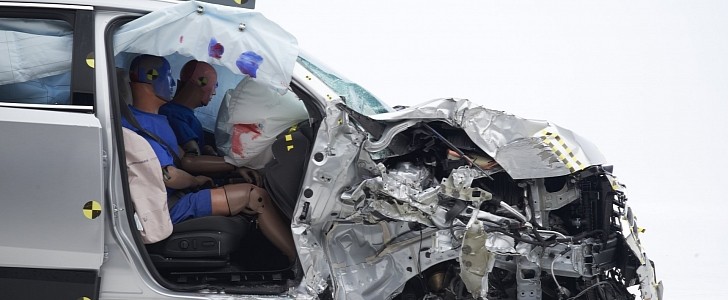When the Takata scandal exploded in 2013, few predicted it would become the biggest safety recall in automotive history. More than 67 million vehicles were recalled in the U.S. alone. But Takata is not the only parts manufacturer to make faulty airbags. A class-action lawsuit was recently filed in San Francisco against ARC Automotive for the same reason.
The new lawsuit was filed after at least two people died and four were injured because of the faulty airbag inflators. The three carmakers mentioned in the case are General Motors, Ford, and Volkswagen. According to NHTSA, which has been investigating the matter for nearly seven years without a resolution, there are 51 million vehicles built with ARC inflators on U.S. roads. That amounts to 10-20% of all passenger vehicles.
It is impossible to determine if your car is affected, even if you tear it apart. That’s because internal parts bear the markings of the automaker or the airbag manufacturer, not the inflator maker. “You could have a ticking time bomb in your lap and you’ve got no way of knowing,” said Frank Melton, a Florida lawyer who is among those filing the new lawsuit, to Detroit News.
Like in the Takata recall, the ARC airbag inflators use ammonium nitrate as a secondary propellant to inflate the airbags. When exposed to moisture, the propellant can develop microscopic cracks, making it burn too quickly and creating a larger explosion. This can rupture the outer metal canister, sending shrapnel into the cabin. That’s precisely what happened with Takata airbags, tied to 28 deaths and hundreds of injuries globally.
Even though NHTSA opened an investigation into the matter in 2015, it has yet to reach any clear conclusion. No wider recall has been imposed yet, but there have been five limited recalls of the inflators that totaled about 5,000 vehicles, including three recalls by GM. Like in the early stages of the Takata recall, many ARC ammonium nitrate inflators are still in use today.
“GM recalled only a small number of vehicles that contained a particular lot of inflators, despite its knowledge that ARC driver- and passenger-side inflators in various models and model years from 2002 through at least 2015 also had experienced ruptures,” the lawsuit says.
The lawsuit alleges that ARC knew about the dangers of using ammonium nitrate. According to the case, after several ARC inflators blew apart in 2019, ARC acknowledged that its use was unacceptable for automotive airbags.
It is impossible to determine if your car is affected, even if you tear it apart. That’s because internal parts bear the markings of the automaker or the airbag manufacturer, not the inflator maker. “You could have a ticking time bomb in your lap and you’ve got no way of knowing,” said Frank Melton, a Florida lawyer who is among those filing the new lawsuit, to Detroit News.
Like in the Takata recall, the ARC airbag inflators use ammonium nitrate as a secondary propellant to inflate the airbags. When exposed to moisture, the propellant can develop microscopic cracks, making it burn too quickly and creating a larger explosion. This can rupture the outer metal canister, sending shrapnel into the cabin. That’s precisely what happened with Takata airbags, tied to 28 deaths and hundreds of injuries globally.
Even though NHTSA opened an investigation into the matter in 2015, it has yet to reach any clear conclusion. No wider recall has been imposed yet, but there have been five limited recalls of the inflators that totaled about 5,000 vehicles, including three recalls by GM. Like in the early stages of the Takata recall, many ARC ammonium nitrate inflators are still in use today.
“GM recalled only a small number of vehicles that contained a particular lot of inflators, despite its knowledge that ARC driver- and passenger-side inflators in various models and model years from 2002 through at least 2015 also had experienced ruptures,” the lawsuit says.
The lawsuit alleges that ARC knew about the dangers of using ammonium nitrate. According to the case, after several ARC inflators blew apart in 2019, ARC acknowledged that its use was unacceptable for automotive airbags.








